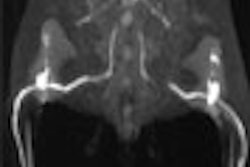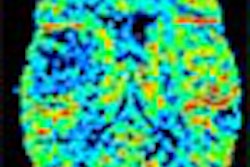Although a less drastic procedure, radiation therapy coupled with limited mastectomy offers no significant advantage over radical mastectomy when it comes to survival rates, according to a study published in the New England Journal of Medicine. Researchers from the National Surgical Adjuvant Breast and Bowel Project (NSABP) analyzed 25 years of data from a randomized trial that looked at whether women who underwent other forms of treatment would have outcomes similar to those who had radical mastectomy.
The Pittsburgh-based NSABP initiated the B-04 trial in August 1971. Between July of that year and September 1974, 1,765 women, average age of 50, with primary operable breast cancer were randomly assigned to treatment. A third of the women with clinically negative axillary nodes underwent Halsted radical mastectomy and axillary dissection. Another third had total mastectomy without axillary dissection and with regional irradiation. These patients received a 50 Gy radiation dose in 25 fractions. The last third underwent total mastectomy only. The mean diameter of the largest tumor was 3.3 cm in the node-negative group.
Of the women with clinically positive nodes (mean diameter 3.7 cm), half underwent radical mastectomy while the other half had total mastectomy and regional irradiation. These women received 60-70 Gy in 25 fractions as their radiation therapy treatment. An additional dose of 45 Gy in 25 fractions was delivered to both internal mammary nodes and the supraclavicular nodes. Tangential fields were used to treat the chest wall with 50 Gy in 25 treatments.
"When the B-04 trial began, it was popularly believed that five years could be viewed as a milestone and that women who lived for five years free of disease were likely to have been ‘cured,’ wrote Dr. Bernard Fisher and colleagues. "However, our findings demonstrate that a substantial proportion of events occurred after five years among both women with negative nodes and those with positive nodes" (NEJM, August 22, 2002, Vol.347:8, pp. 567-575).
The results showed no significant difference in disease-free survival among the groups of women with negative nodes. At the 25-year mark, the estimated disease-free survival rate was 19% in the radical mastectomy group, 13% in the total mastectomy and radiation therapy group, and 19% in those who underwent mastectomy alone.
"Similarly, in the groups that underwent total mastectomy, there was no significant difference between women who received radiation therapy and those who did not (p=0.78)," the authors wrote.
For the women with positive nodes, disease-free survival was 11% in the radical-mastectomy group and 10% in the patients treated with total mastectomy and radiation therapy. Only 20% of the women with negative nodes and 13% of the women with positive nodes were alive and event-free after 25 years of follow-up, the group reported.
They also found no significant difference in distant disease-free survival in the node-negative group: 46% for radical mastectomy; 38% for radical mastectomy with radiation; and 43% for total mastectomy alone. In the node-positive patients, the distant disease-free survival rate was 32% for those who underwent radical mastectomy and 29% for those who had total mastectomy and radiation.
Finally, the study found no notable difference in overall survival rates of both node-negative and positive women. The cumulative incidence of death among the patients was 80% during the 25- year period. Forty-nine percent died after recurrence or contralateral breast cancer; 31% died without a diagnosis of any breast cancer-related event; and 20% were alive at last follow-up.
"(Our) findings validate earlier results showing no advantage from radical mastectomy," the investigators concluded. In addition, "after 25 years of follow-up, we found no survival advantage from radiation therapy after total mastectomy in women with clinically negative nodes. Twenty-five percent of all first distant recurrences and 50% of all contralateral breast cancers were detected after five years, which indicates the need for long-term follow-up, particularly in the evaluation of patients with a good prognosis."
By Shalmali PalAuntMinnie.com staff writer
September 2, 2002
Related Reading
Breast cancer screening reduces mastectomy rates in Italy, August 23, 2002
Will breast MRI increase mastectomy rates?, June 28, 2002
Breast brachytherapy spares time and tissue, April 12, 2002
Postmastectomy radiation may be warranted after response to chemotherapy, February 21, 2002
Copyright © 2002 AuntMinnie.com



















